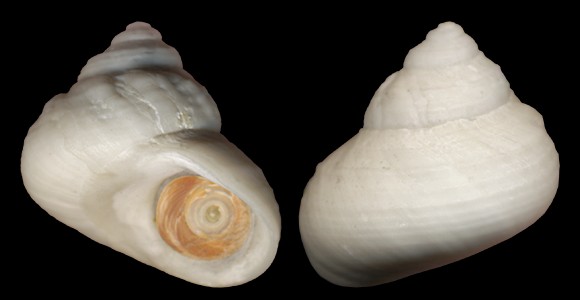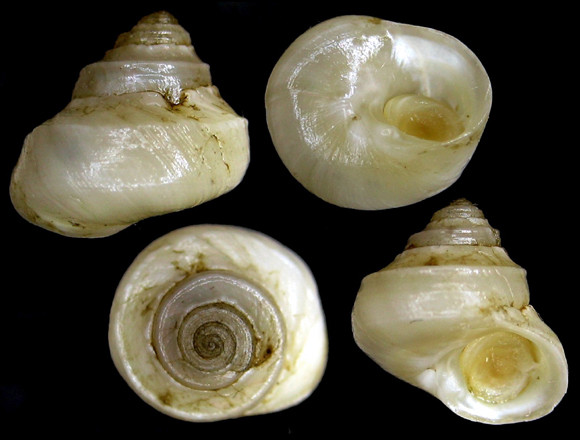
Celtic Sea and Brittany to Mauritania, Azores & Madeira to Mediterranean. Specimens collected in Florida (cf. Jeffreys infra) may belong to the more recently discovered species Cantrainea yoyottei Vilven 2001, described after shells from Guadeloupe island. Lives in bathyal depths (545-1300m), on white coral bottoms (Mediterranean), sand or gravel (Atlantic). Grazer and deposit feeder. The shell bears the name of the Capo Peloro, NW. Messina Strait, type locality of the Pliocene fossil on which this species was described.
protonym: Turbo peloritanus.
« Shell subconic, thick, covered with smooth striae and transversal weak ribs; ribs slightly granulated; whorls convex; base smooth and glossy. » – F. J. Cantraine: “Diagnoses ou descriptions succinctes de quelques espèces nouvelles de mollusques”, Bulletin de l’Académie Royale des Sciences et Belles-lettres de Bruxelles vol. II (1835) page 387.
600m deep, Gioia tauro, Reggio Calabria, SW. Italy. 14mm.

« Turbo carinatus: shell subconic, thick, smooth; whorls carinate covered with smooth striae, the last one concave topside; base smooth and glossy. » – F. J. Cantraine:
op. cit.
« Smaller, and usually having a single peripheral keel instead of several spiral ribs. […] Young shells are umbilicate. Perhaps that character and the operculum having a multispiral nucleus on the underside may constitute sufficient grounds to separate the present species from Turbo ; and in that case the genus might be called Cantrainea in honour of the discoverer and celebrated conchologist. » – J. G. Jeffreys: “On the Mollusca procured during the ‘Lightning’ and ‘Porcupine’ Expeditions”, Proceedings of the Zoological Society of London, year 1883, pages 178-179.
« Smaller, and usually having a single peripheral keel instead of several spiral ribs. […] Young shells are umbilicate. Perhaps that character and the operculum having a multispiral nucleus on the underside may constitute sufficient grounds to separate the present species from Turbo ; and in that case the genus might be called Cantrainea in honour of the discoverer and celebrated conchologist. » – J. G. Jeffreys: “On the Mollusca procured during the ‘Lightning’ and ‘Porcupine’ Expeditions”, Proceedings of the Zoological Society of London, year 1883, pages 178-179.
Mediterranean carinate form, collected at 650m deep, in the Sardinia Channel. 13mm. Original pictures provided by A. Nappo (IT) – (CC BY-NC-SA).